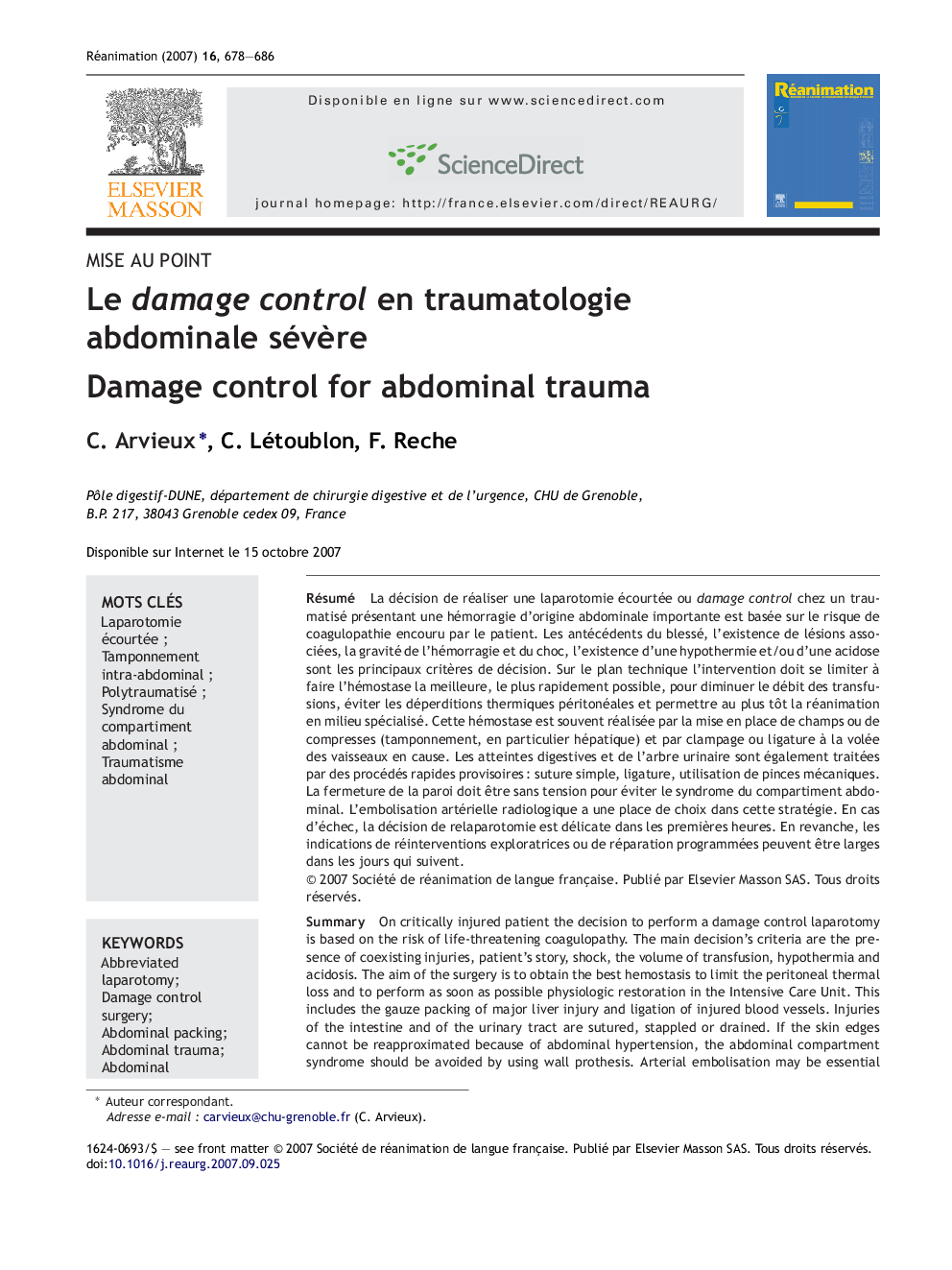| Article ID | Journal | Published Year | Pages | File Type |
|---|---|---|---|---|
| 2613853 | Réanimation | 2007 | 9 Pages |
Abstract
On critically injured patient the decision to perform a damage control laparotomy is based on the risk of life-threatening coagulopathy. The main decision's criteria are the presence of coexisting injuries, patient's story, shock, the volume of transfusion, hypothermia and acidosis. The aim of the surgery is to obtain the best hemostasis to limit the peritoneal thermal loss and to perform as soon as possible physiologic restoration in the Intensive Care Unit. This includes the gauze packing of major liver injury and ligation of injured blood vessels. Injuries of the intestine and of the urinary tract are sutured, stappled or drained. If the skin edges cannot be reapproximated because of abdominal hypertension, the abdominal compartment syndrome should be avoided by using wall prothesis. Arterial embolisation may be essential during this period. Reoperation is dangerous in the immediate postoperative period, but it has to be proposed later for reexploration or damage reparation.
Keywords
Related Topics
Health Sciences
Medicine and Dentistry
Emergency Medicine
Authors
C. Arvieux, C. Létoublon, F. Reche,
